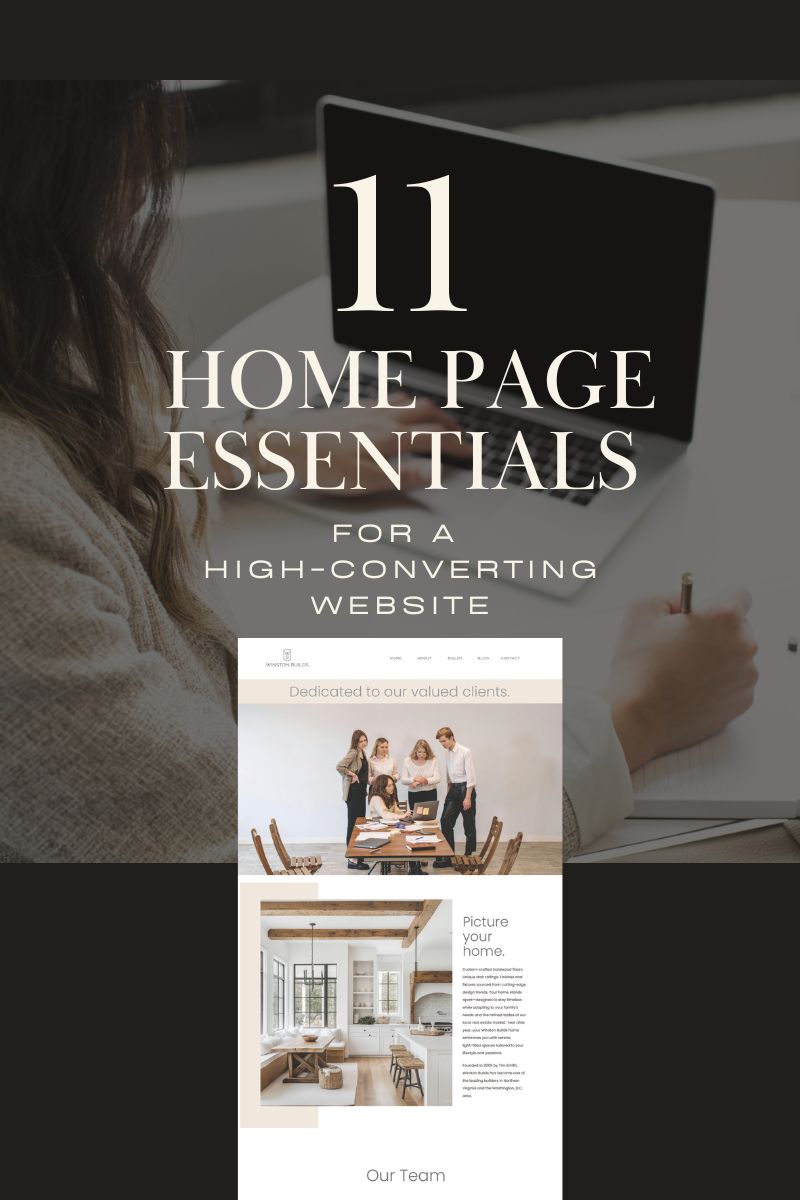Your home page is often the first impression visitors get of your business. A well-designed home page should guide them effortlessly toward understanding what you do, why it matters, and how to take the next step. If your website isn’t converting visitors into leads or customers, it may be missing some crucial elements.
1. Navigation menu + logo
Your navigation menu should be easy to find, simple to use, and structured logically. Include only the most important pages, like “About,” “Services,” and “Contact.” Keep your logo prominently displayed, typically in the top left or center, and ensure it links back to your home page.
2. Hero with value proposition
The hero section is the first thing visitors see when they land on your site. It should clearly communicate what your business does and who it serves. A strong value proposition answers the question, “Why should I choose this company?” in just a sentence or two.
3. What the business offers – products/services
Don’t make visitors hunt for what you do! Include a brief section outlining your services or products. Keep it concise but compelling, and link to dedicated pages for more details.
4. Bio/meet the team
People connect with people. A short introduction to you (or your team) helps build trust. Keep this section brief—just enough to add a personal touch—and link to a full “About” page for those who want to learn more.
5. Examples of work
If you offer a service or sell products, showcasing real examples builds credibility. This could be a portfolio, case studies, or a few featured projects. High-quality images and short descriptions work best here.
6. Section leading visitors to the next step
Your home page should gently guide visitors toward the next logical action. Whether it’s learning more, exploring services, booking a consultation, or shopping, make this step clear and easy to take.
7. Social proof
People trust other people. Including testimonials, client logos, media mentions, or case studies reassures visitors that your business delivers results. If you have reviews from Google, Facebook, or industry sites, consider embedding them here.
8. Lead magnet
A well-placed lead magnet (such as a free guide, discount, or exclusive content) helps you build an email list and nurture future customers. Offer something valuable in exchange for their email to keep them engaged.
9. Contact form
Make it easy for visitors to reach you. A simple contact form with fields for name, email, and message is often enough. If applicable, you can include options like “Service Inquiry” or “General Question” to direct messages efficiently.
10. Footer
Your footer is a great place to include quick links to important pages, business hours, a secondary contact option, and social media links. A well-designed footer makes it easy for visitors to navigate your site even if they’ve scrolled past everything else.
11. Privacy Policy
A privacy policy isn’t just a legal requirement in many cases—it builds trust. Let visitors know how their data is handled. Even a simple link to a privacy policy in your footer is enough.
Your home page should feel like a warm welcome to your business. It’s not just about looking good—it’s about guiding visitors toward action. With these 11 elements in place, your website will be well-equipped to engage, inform, and convert visitors into customers.
Would you like a website audit to see how your home page stacks up? Let’s chat! Send a message through my contact page.
Home page essentials for a high-converting website

grab this guide »
- How to attract and book the right clients
- Ways to refine your messaging and stand out
- Strategies to position your brand as the go-to choice
- Simple website tweaks to boost conversions
- How to make your brand work for you